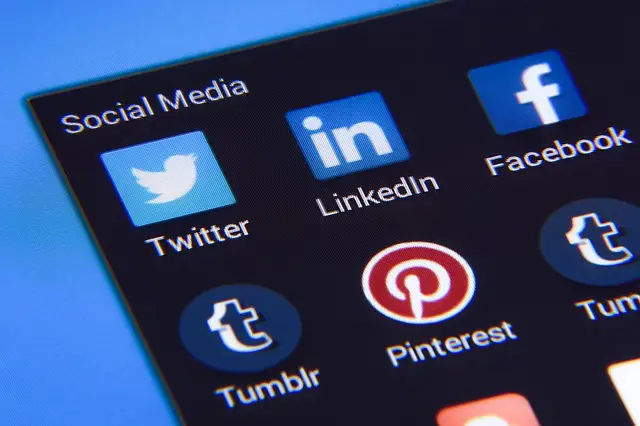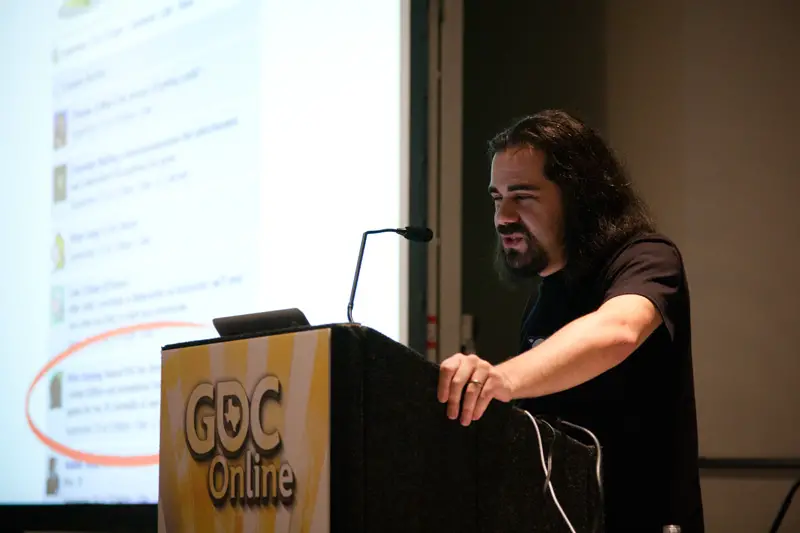The ability to stay dedicated is the way to both professional and personal success. If you are distracted, you’re barely likely to complete that future best-seller you’ve been working on, have your brilliant business idea in writing or basically enjoy the time you spend with the people you love.
The world has a lot of distractions. Employers enforce demands on us even in times we are not in the office, and as technology makes even more invasions into our personal lives and our focus is regularly changed from what we actually need. Therefore how are you meant to remain productive and sane?
Nir Eyal who is the bestselling author of Hooked, a study of habit-forming products like Facebook and Twitter, has discovered the solution to distraction. Eyal names it becoming “indistractable.” In these chapters, we’ll look at how you can learn this “skill of the century,” learn to ignore distractions and concentrate on the things that are actually important.

1 – Distraction begins from inside.
Why are we susceptible to distraction? One regular reply to that is technology. If you’ve ever attempted to give away your digital devices and gadgets, you’ll understand that not using them doesn’t essentially hinder you from procrastinating. If it’s scribbling on a piece of paper or counting the books on your shelf, brains are masters at creating kinds of distraction.
In order to know what is happening when we are distracted, we have to talk about what triggers them – stimuli that push us into action or tell us to do something. These appear in two kinds. External triggers are the outside world –like pop-up notifications on your laptop. Internal triggers, such as feeling bored or stressed, come from inside you.
Triggers can cause either traction or distraction. The former pushes us forward, causing us to follow our goals and determinations. However, distraction is the opposite; it takes us away from those goals.
This is the reason why technology can’t be responsible alone for distraction. Actually, distraction has internal sources all the time. Distraction is essentially about avoiding something that is uncomfortable like a rumbling stomach or marital difficulties or deep dissatisfaction with your career. Tech is only a proximate source. We put the blame on our incompetence to do things and fail to consider the core issue.

The sad news is that we are evolutionarily hardwired for discomfort. Our ancestors continued learning, evolving and, eventually, surviving since they weren’t satisfied with their lot. Currently, which is thousands of years after, that inheritance manifests in our ability to view things in a negative light, reflect on painful experiences and immediately become bored with new circumstances.
This enables us to become susceptible to distraction. However, this is the good news: we don’t need to be slaves to our negative feelings – we can also control them. Let’s see how you can do that.
2 – Your internal triggers can be learned by reassessing them.
Imagine the scene where you are sitting at your desk and you unexpectedly experience that usual twinge of boredom. Before you realize, you’re already ten minutes into another Instagram binge or email checking. It occurs to the majority of us daily. Don’t stress– there are approaches to fight these internal triggers.
Begin by changing the manner you think about triggers. How? One method to do that is to record them. When next you feel yourself giving in to distraction, take a pen and a paper and jot down your feeling and what triggered it. Perhaps, it was an unexpected flow of anxiety; perhaps it was your boss that got you angry. Write down when it happened and how you felt when you observed the trigger.
You will learn to recognize the triggers if you do this all the time. Once you’ve are able to identify them, you can start letting them go. Jonathan Bricker a psychologist recommends a simple visualization method: visualize that you are sitting next to a stream and watching your distracting thoughts being flown away on leaves floating on the water.

This is another hint: ensure that you make your tasks very fun. The reason why we regularly go for the apps or games on our phones is simple – they’re created to be interactive. As Ian Bogost an interactive-computing expert states, it is because they possess an extraordinarily effective system of rewards and challenges. Putting that understanding into chores makes it really interesting. Why not attempt, for instance, setting the challenge of completing a task in record time or serving customers in a new approach?
Lastly, reassess your potential. What you think of yourself has a big effect on what you are capable of doing. If you say to yourself that you don’t have power in the face of distraction since you don’t have self-control at all, for instance, there’s a probability that it will become a self-fulfilling forecast.
Practicing self-compassion is the trick to enhancing your self-belief. When you hear that critical inner voice saying that you are lazy or distractible, endeavor to talk to yourself in the exact manner you would talk to a good friend. When you do that, you’ll tell yourself that you actually have the power to conquer distraction!
3 – Create time every week for yourself, your relationships and your job.
If you don’t understand what you’re trying to achieve, it’s difficult to know what distraction is really hindering you from succeeding. That is the reason why it’s really essential to have a plan.
The basic method of effective planning is timeboxing or putting aside certain “slots” on your weekly agenda for the accomplishment of certain tasks.
Now, this doesn’t regularly assure that you will really achieve your targets – some things, after all, are not within your control. If you’re not exhausted come your scheduled bedtime, you’ll probably find it difficult to sleep on schedule; if your inspiration is low one morning, you won’t be able to write 5,000 words of your book that day. What timeboxing actually assures is a framework that makes it possible to achieve success. Put differently, if you can’t control time, you might likely not complete what you intended.
What does timeboxing seem like in practice?

Well, as strange as it might seem, making time slots for your work isn’t the best way to begin– the first thing you have to do is to plan enough time for yourself. The reason for this is simple: if you are not taking proper care of yourself, everything else like your work, marriage will eventually suffer. This signifies that you will want to start things by creating enough time for sit-down meals, a good night’s sleep, and your hobbies.
The second part of timeboxing is basically about your relationships. Here, you are basically taking care of the aspects of your life that offer intimacy and a feeling of connection – the things that attract you. Since relationships are really essential, it’s important to bring them to the before you instead of providing the people you love with the time that’s remaining. Therefore, proceed and have a monthly date with your partner, a bi-monthly get-together with your friends and one hour or two hours a day to have fun with your kids.
And that takes us to your work. You might not have the opportunity of creating your own working hours; however, that doesn’t signify that you can’t manage how you make use of your time at your workplace. You could create two hours for focused personal work in the morning, and timebox another late-afternoon slot for checking emails. You could share that plan with your coworkers to make sure you won’t be distracted when you have to concentrate.
4 – Protect your concentration by reducing office distractions and emails.
Up till now, we have explored beating internal triggers to get the most traction in our everyday lives. In this particular chapter, we will adjust and teach you how to cope with the lots of external triggers in the world that surrounds you. Just like coders who hack software, you’ll break the code and rewrite it according to your benefit.
This can be remarkably easy. Consider an illustration from the aviation industry. In the 1980s, countries started making new regulations that clearly prohibited cabin crews as well as other staff from disturbing pilots while they are taking off and landing, the very risky aspect of a flight.
That is an essential hint to trail in your personal workplace. Just like take-offs and landings, there are aspects of your day that are very essential than others. At those times, you have to completely concentrate on the task you have to do. Meaning, you have to be indistractable.

If it’s a colored card you put on your desk or a unique hat – the author’s wife’s key – is to ensure that your present status is noticeable to the people that surround you. Therefore, inform your colleagues on your symbol and offer them an opportunity to help you on your journey to indistractablity!
Another popular cause of distraction is our emails. Nowadays, the average office worker gets nearly 100 different messages per day. They are extremely habit-forming since they offer something known as variable rewards or, in common language, surprises. Because you will never know what will appear in your inbox, you’re interested in continuously checking it.
Categorizing your emails into two different piles is an effective manner of breaking that routine. Take that from the author. He puts emails that need a reply that day into a folder marked “Today.” Messages that just need a reply during that week go to the other folder. He checks the first category that exact day and timeboxes a weekly slot to work through the second category. The outcome: fewer emails needing your attention each day!
5 – All your meetings, chats, newsfeeds, and bulky home screens can be hacked back.
Emails aren’t just the distraction you encounter in your workplace – futile meetings that yield nowhere regularly consume even more of your valuable time. Fortunately, there’s a simple method of solving this regular office problem.
The key is organization. All you need is a policy asserting that meetings can take place once the person calling the meeting has distributed a detailed plan and a brief abstract indicating what steps need to be done to fix the issue. This raises the cost of planning and lessens the probability of coworkers planning pointless sit-downs.
The exact policy can be used in the never-ending group chats on Slack or Basecamp. Just tell your colleagues that you’d like to stop these from getting beyond control and distracting you while working and create a certain time during the day for catching up with chats.
Online articles and news feeds are also distracting just like meetings and team collaboration software. If you see that it is hindering you from your goals, you can learn from the author’s book. Instead of attempting to continue with the recent news during office hours, Eyal saves exciting articles on his phone with the Pocket app. Afterward, he uses that app’s text-to-speech function to listen to the articles during his walk. It’s a convenient method of keeping fit and keeping off distractions!
There are also apps such as Todobook, which substitutes your Facebook feed with a news feed containing your to-do list. On the other hand, DF Tube takes out Youtube’s suggested videos and ads to enable you to use the site more mindfully.

Talking about technical fixes, it’s essential to use a minute to sort out your phone and desktop. If they’re scattered around with a lot of hardly used or total useless apps, it’s time for a spring clean. Dispose of anything you don’t use frequently and reorganize what’s remaining in order for necessary apps like GoogleMaps and rideshare services to be easily accessible. Make sure notorious timewasters such as Facebook and Twitter are on the last page or only use them on your desktop where they are less likely to tempt you.
For your desktop, you can copy the author’s arrangement and put all the files apart from the one you are working on presently in a folder named “everything” and you can use the search function to look for them when you have to use them.
6 – Utilize (Take) pacts to stop distractions.
At the moment, you are prepared to keep annoying distractions out. However, this isn’t a fight you can win in just one day. If you need to remain indistractable, you’ll be fighting the good fight daily. That is not as overwhelming as it might seem– as a matter of fact, there are a lot of tricks that can assist you with that
Use effort pacts. This is an approach to make unwanted behavior even harder. Apps can really assist you here. For instance, SelfControl prevents your access to distracting websites and enables you to have “time out” periods for looking at your emails.
Another method is “Study buddies”. Just create a time and spot to meet and carry on with your work. You don’t have a friend close by who wants to do that? Platforms such as Focusmate link you up with a study buddy, occasionally on the other part of the world.
There is also a price pact. You might have probably guessed from the name, this has fines for missing targets. For instance, the author determined that he’d lose a $100 bill each time he missed a gym session. During the three years that he first did that crazy-sounding pact with himself, he hasn’t given any dollar yet!

Although that was effective for the author’s, it’s not the appropriate way for all commitment. Some goals, such as bringing an end to biting your nails, can’t be resolved by self-punishment since you can’t regulate the external trigger.
Identity pact is another precommitment tool. Picture a one-time meat-eater who has chosen to change to a plant-based diet. If she labels herself as someone who has stopped eating meat, she’ll probably be bothered by temptation. If she defines herself as a vegetarian, by contrast, she’s calling herself positively instead of negatively. She isn’t a person who can’t eat meat; she’s someone who doesn’t eat meat.
The identity pact is basically committing to living up to a positive perception of your future self. This is also effective when it comes to overcoming distractions. If you label yourself as indistractable, you’re very liable to make that become a reality.
7 – Distraction at the workplace is an indication of dysfunctional work culture.
Some sources of distraction are personal; some are structural. In this particular chapter, we’ll talk about the structural one. It’s time to discuss dysfunctional work cultures.
This is the issue in brief: if your company is ineffectively organized and run, your efforts to become indistractable will be hindered all the time. One of the most usual indications of workplace dysfunctionality is the manner work progressively takes workers “free time.”
In the era of smartphones and never-ending connectivity, a lot of companies demand their employees to be on-call and reply to work emails and queries around the clock. Avoid doing that and you may see yourself jobless.
The actual problem isn’t technology, but; it’s a culture whereby time is poorly managed, employees are overworked and, surely, distracted. Therefore, what can be done to mend this type of incidences?
The key is to make a platform where employees can safely talk about their problems. Without that, there’s a small probability that they will ever have more control over their work lives. The main term here is safety. If they believe that they will be disciplined for saying their feelings, probabilities are they will remain quiet.

Leaders have an extraordinary role to enhance that sense of safety, and this can be done when they lead by example, acknowledge their imperfection and frequently ask the people they are managing for feedback. This forms a surrounding of learning and a culture where people take risks since they are not afraid of failing.
Slack might be accountable for distracting countless workers around the globe with its group chat software; however, the company itself provides a good model of functional workplace culture in action. It has a committed feedback channel permitting workers to share their views on company life. There’s a channel that is named “#beef-tweets” which allows employees to talk to their management.
Significantly, managers react to feedback, making use of the eyes emoji to indicate that they’ve noticed a complaint and an emoji to show that it’s been fixed. It’s a little touch; however, it is really helpful toward offering employees a sense of control.
8 – In order to bring up indistractable kids, we have to know the root of the reasons of why they get distracted.
What’s with these present-day kids? They use their entire time stuck to a screen instead of enjoying the great outdoors with their friends just like we used to do, right?
Wrong. Let’s consider it from a different, and less idealized, perspective and question ourselves why they’re so reliant on digital devices.
As Richard Ryan and Edward Deci, both human behavior researchers indicate, over-dependent on technological stimuli is a very good sign of psychological undernourishment. Just like us, kids require three things to success: autonomy, the ability to make unforced choices; competence which is the ability to learn and improve; and relatedness, the ability to relate meaningfully to others.
Unfortunately, many of these young kids aren’t getting those in their offline lives. At school, they are choked by guidelines. At home, they bear the weight of their parents’ expectations and risk being tagged as failures if they don’t perform well on standardized tests which fail to enhance their imaginations. Even worse, they use less and less disorganized time with their friends.
Combine all those together, and it is barely surprising that they resort to the online world. That is the only place they have to wander freely and mingle with their friends freely. And that provides a complete circle. If you need your kids to kick their digital distractions, you have to ensure that you are providing them the psychological nutrients they require to grow.

Firstly, you have to ensure that are getting enough unstructured playtimes. A lot of studies confirm how essential this is to their growth. Your best chance is to discover like-minded parents and plan consistent get-togethers with their kids.
It’s really essential that children have a contribution on how they use their time. Just like you, they are very clever in learning how to use the indistractability methods that we’ve looked at in these chapters. You can assist that process along by speaking to them on technology and its risk and questioning them on how long they think they have to spend on their phones.
Also, you need to support their efforts to control their own external triggers. Talk about it and you might actually understand what you’re what’s distracting them occasionally from doing essential tasks. Lastly, assist them to create their own pacts to hinder distraction. For instance, the daughter of the author, learned to make use of a kitchen-timer to check the time she used on watching Netflix show when she was only five. Incredibly, that was her idea!
Indistractable: How to Control Your Attention and Choose Your Life by Nir Eyal Book Review
Technology is regularly held accountable for our present distraction crisis; however, regardless of what the critics claim, it isn’t taking over our brains and making us into zombies. If you truly want to know what distraction is, you have to dig deeper and know the psychology of distraction. Once you get to know how distraction functions, it’s likely to begin preventing the things that distract you. If it’s organizing your desktop, using your Facebook routine or making deals with yourself, the tricks in these chapters will make you become indistractible.
Delay distraction for only 10 minutes.
Have you ever immediately looked at your emails at a red light just to see yourself halfway through a response when the signals turned to green? Or perhaps you’ve quickly glanced at your social media profile during a spare time only to notice that you were running late for a meeting. These types of outwardly innocent distractions have a habit to take the time you are meant to be using more productively. This is where the “ten-minute rule” comes to play. This is how it functions. When next you get tempted by Twitter or your smartphone, say to yourself that you’re permitted to surrender –however, just after ten minutes. Probabilities are, immediately that time is up, you’ll be occupied with your work and won’t even realize.
Download Pdf
https://goodbooksummary.s3.us-east-2.amazonaws.com/Indistractable+by+Nir+Eyal+Book+Summary.pdf
Download Epub
https://goodbooksummary.s3.us-east-2.amazonaws.com/Indistractable+by+Nir+Eyal+Book+Summary.epub
